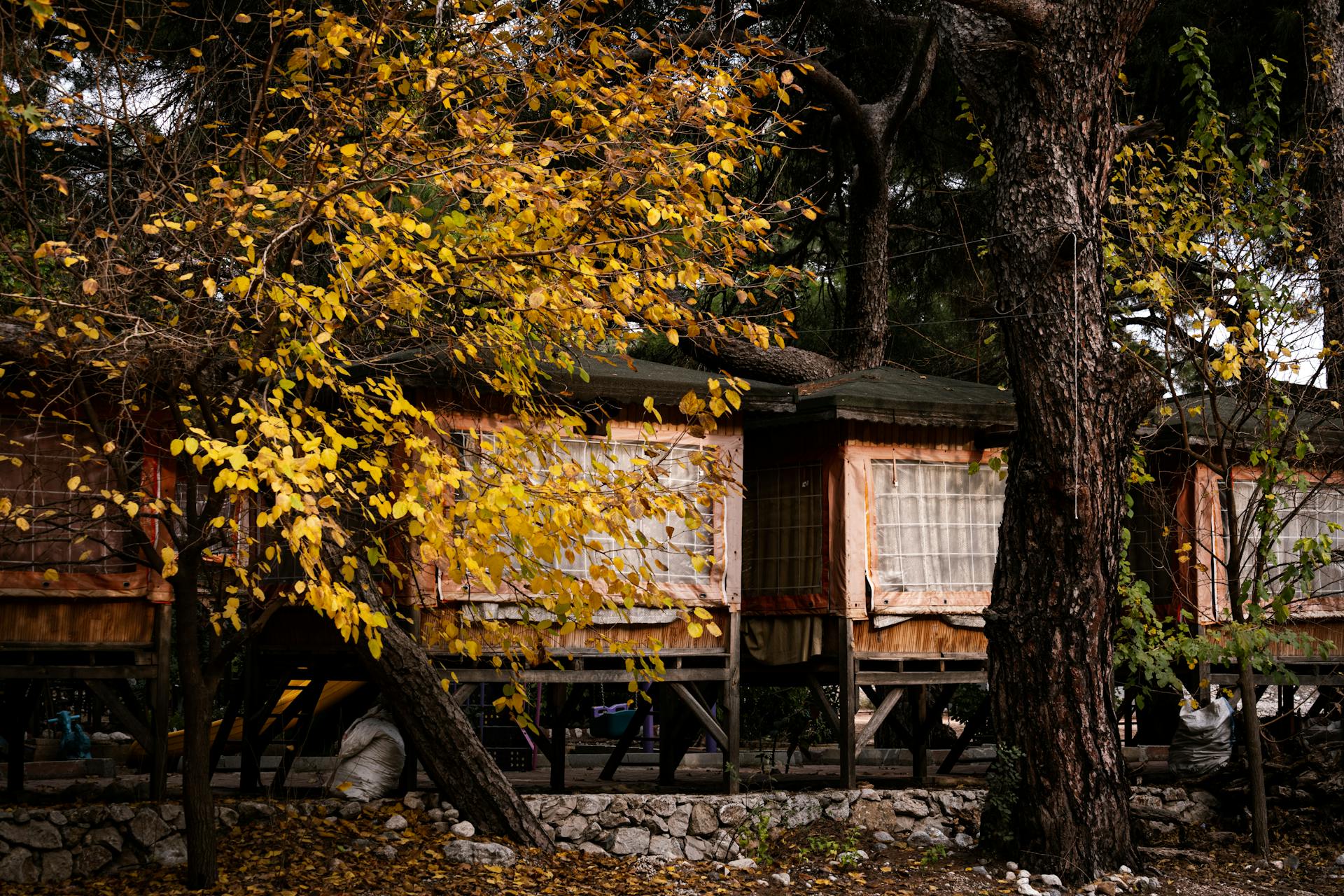
If you're looking to give your home a rustic, vintage feel, then reclaimed wood is definitely the way to go. But before you rush out to buy some planks or beams, there are a few things that you should know about reclaimed wood.
Firstly, what exactly is reclaimed wood? It's timber that has been salvaged from old buildings, barns or homes and given a new lease of life as furniture, flooring or decorative accents. This makes it an eco-friendly choice as it reduces the amount of new trees being cut down and also preserves a little piece of history in your home. But despite its popularity, there are a few important factors to consider before investing in reclaimed wood products.
In this article, we'll cover everything you must know about reclaimed wood before buying. From the different types of wood available to how it's sourced and treated, as well as some tips on what to look for when purchasing reclaimed wood items. So sit back and grab yourself a cuppa as we delve into the fascinating world of reclaimed wood!
Explore further: Benefits of High Quality Wood
Discover What You Need to Understand About Reclaimed Wood
Reclaimed woods are a hot trend in the design industry today. It is equal wood, but with a new twist. Centennial woods, one of the largest providers of reclaimed wood, offers exposed raw reclaimed wood that is perfect for your home or office space.
Winter snow blows sideways across vast stretches from Cheyenne, Casper, Gillette, Rock Springs and Rawlins to Green River in Wyoming. This makes travel hard and road maintenance expensive. The state employs a simple ancient green method to make modern snowplowing Wyoming easier by installing wooden snow fences parallel to highways. An oversized shipping pallet tipped on its end positioned upwind creates a barrier for snow accumulation against braced wood fences. A 2005 article published in a government engineering magazine found that using 20 feet of Wyoming wooden snow fences eliminates the need to plow 85 tons of snow per mile of highway maintenance per winter season – a commensurate amount of greenhouse gasses as removing five cars from the road years earlier.
Centennial woods – one of the largest providers of reclaimed wood – discovered people occasionally stole wood indicating market demand for this reclaimed material. That's why they offer it as an eco-friendly option for design industries looking for something unique and sustainable. If you're interested in incorporating reclaimed wood into your home or office space, check out Centennial Woods and see how their reclaimed wood can make your space look beautiful while also being environmentally responsible!
1. Where Does Reclaimed Wood Come From?
Reclaimed wood comes from a variety of sources, but one popular option is Wyoming snow fences. These fences, located in the northeastern part of the state near the iconic Devil's Tower Butte formation, are made of sustainably harvested Douglas fir and Ponderosa pine. Companies like Centennial Woods repurpose these wood planks for home decor and construction projects, making use of a renewable resource that would otherwise go to waste. (Photo courtesy of Centennial Woods)
2. Can Reclaimed Wood be Used for Residential Projects?
Yes, reclaimed wood can definitely be used for residential projects! As evidenced by Centennial Woods favorite projects, like the 5320-square-foot home situated at an 8000-foot elevation in Fraser, Colorado. This net energy home fully powers itself and has a tightly insulated envelope, high-efficiency fiberglass windows, green roof led lighting, automated window shades, and more. The home scores impressively on efficiency tests and showcases the beauty of fence wood as a prominent aesthetic feature. Reclaimed wood is not only eco-friendly but resilient too: it can easily tolerate the average annual temperature of 34 degrees at this mountain retreat. (Photo courtesy of Centennial Woods)
3. Is Reclaimed Wood Carbon Neutral?
According to a carbon impact study by the Singapore Green Building Council, reclaimed wood is carbon negative, meaning it actually reduces carbon in the atmosphere. Companies like Centennial Woods use reclaimed Wyoming fence wood and weathered wood from the Pacific Ocean to create build-worthy characteristics in cedar pine and oak lumber through extensive drying. Photo courtesy of Laramie Seattle, New York Dubai, and Centennial Woods show how rich aesthetic and wholly suitable for building interiors or exterior applications make reclaimed wood largely driven by environmental responsibility.
Save the forests and add rustic charm to your home by building with reclaimed wood. Here are some tips to help you find what you need.

Save the forests and add rustic charm to your home by building with reclaimed wood. Today's reclaimed wood is a vintage variety that builders began using in the early 20th century when old-growth trees were still abundant. Unlike fresh wood, reclaimed wood comes from young trees, making it a desirable sustainability option.
One important reason for reclaimed wood's continuing popularity is its unique character. Old-growth wood has tight growth rings and unique grain patterns that give it a distinct look that cannot be replicated by young trees. Robert Kundel, who works with restorer tools hears many customers say they want "that look" that only reclaimed wood can provide.
To find reclaimed wood, experts handpick and prep work to defray costs. A demolition site can be a great source for salvaged materials, but purchase ready-to-use reclaimed lumber is also available from potential sources such as lumber markets or specialized dealers who have already collected and processed the materials for you.
Discover the Best Places to Purchase Reclaimed Wood Today!

Reclaimed wood is a great way to add character and charm to any space. Surprisingly, Kundel from Ohio Valley Reclaimed Wood suggests that Instagram offers many online sources for reclaimed flooring, paneling, beams, and more. Some popular platforms include Etsy, Craigslist, Box Kite Barn Yard, and Kentucky Wisewood.
Home Depot carries reclaimed wood paneling in ready-to-use condition; however, suppliers conduct business primarily through an online presence. If you're shopping for reclaimed wood from a salvage company or local demolition project, Kundel recommends Humble Barn as a potential source.
Looking for an economical source of building materials? Reclaimed wood might just be your answer! To find wood in good condition, Kundel suggests using restorer tools to uncover hidden beauty in old pieces. With so many options available both online and offline, you're sure to find the perfect piece of reclaimed wood for your next project.
Frequently Asked Questions
Does Home Depot sell reclaimed wood?
Yes, Home Depot sells reclaimed wood. They offer a variety of reclaimed wood products including barn wood, pallet wood, and paneling.
What would happen if reclaimed wood wasn't used?
If reclaimed wood wasn't used, more trees would have to be cut down to meet the demand for new timber. This could lead to deforestation and habitat destruction, ultimately harming the environment.
What does reclaimed wood mean?
Reclaimed wood refers to wood that has been salvaged from old buildings, barns, or other structures and given a new life as furniture or decorative pieces. This sustainable practice not only reduces waste but also adds character and history to the finished product.
Why is reclaimed lumber so popular?
Reclaimed lumber is popular because it's environmentally friendly, has a unique history and character, and can add warmth and charm to any space.
Does reclaimed wood have the same character?
No, reclaimed wood does not have the same character as new wood. The unique history and natural wear and tear of reclaimed wood give it a distinct look and feel that cannot be replicated.
Featured Images: pexels.com


